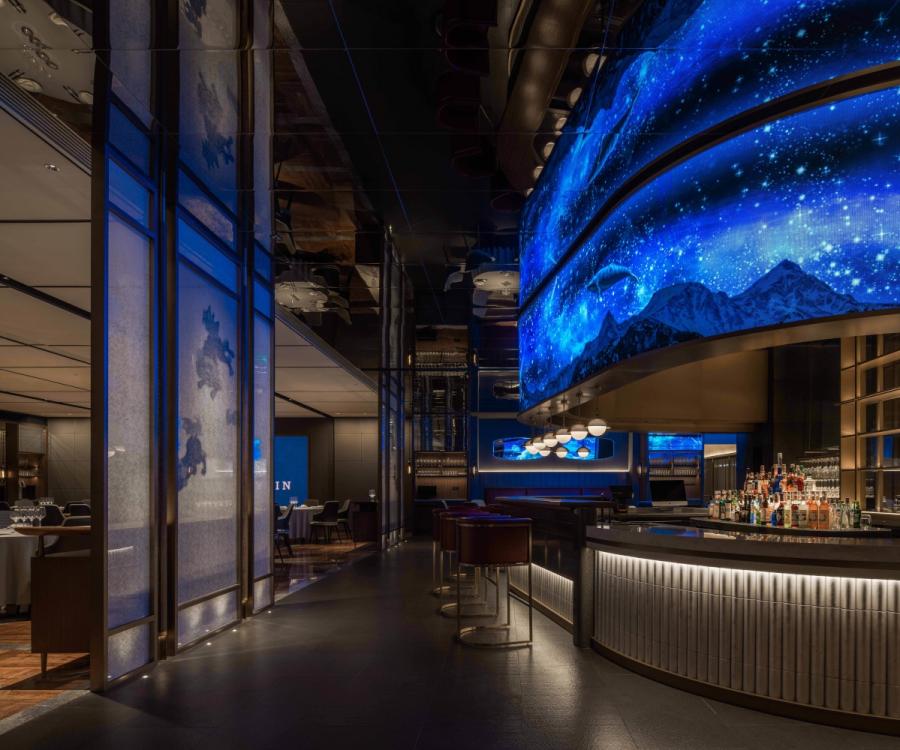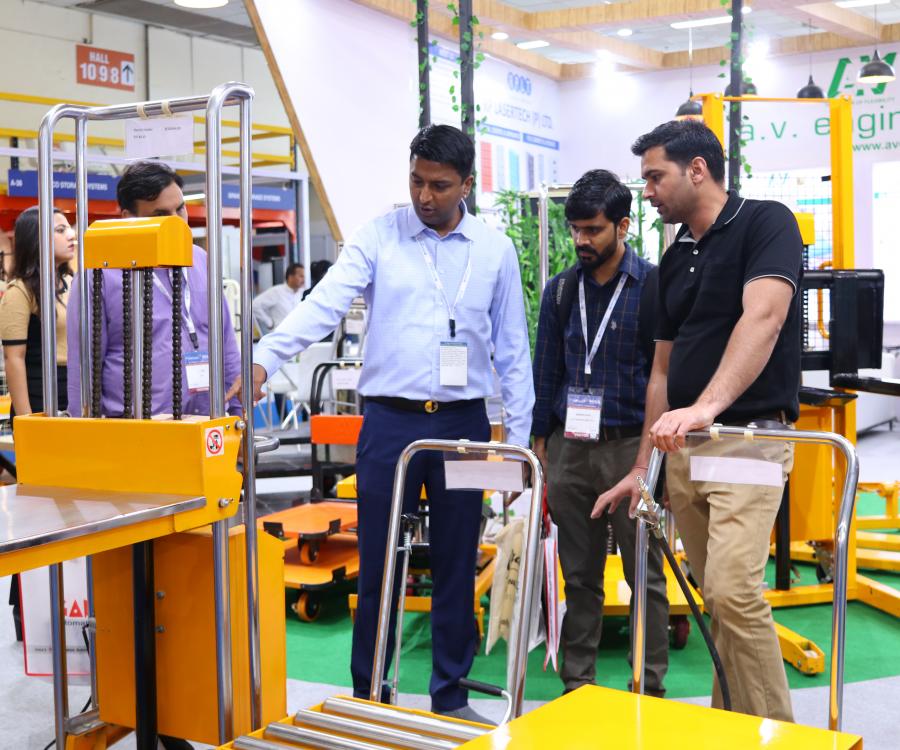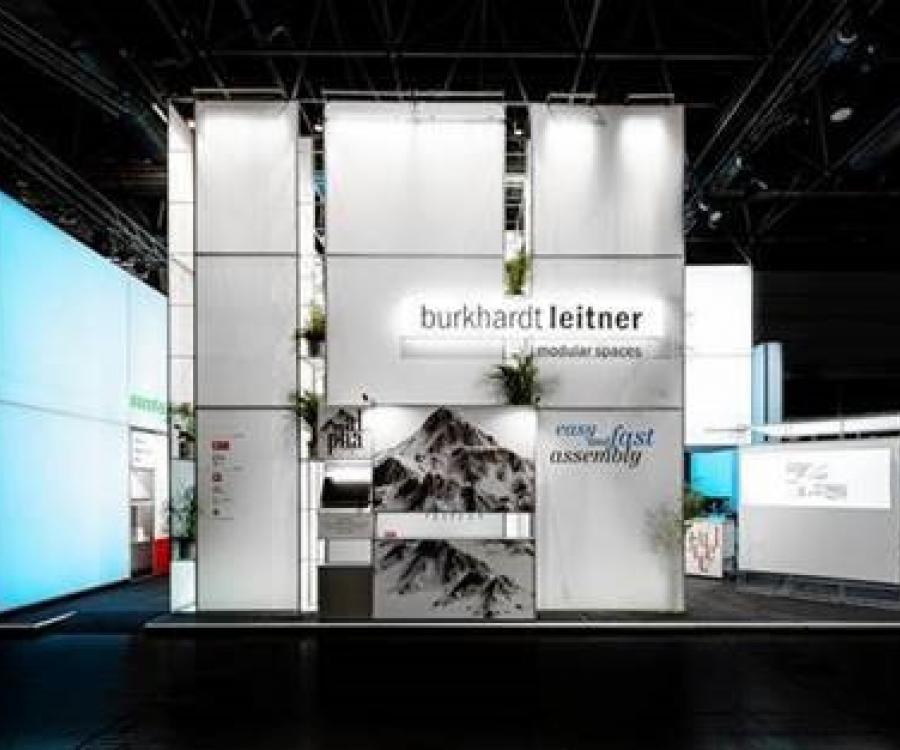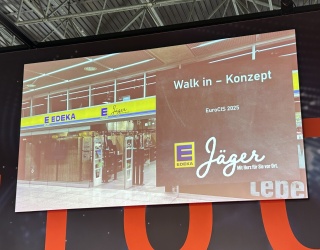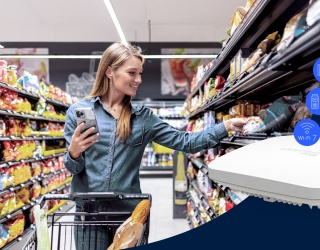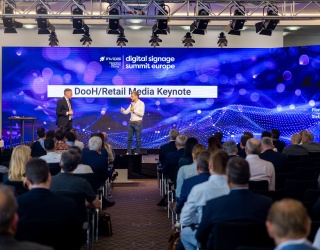It requires perfect timing, improvisational skills, and nerves of steel: you need to overcome a mountain of logistics before a store is able to launch with a new look. Furniture and equipment need to be available at the right time, so shopfitters are able to do their work.

Mr. Sterk, you organize the entire supply chain for interior shopfitting. What are some of the aspects you need to juggle?
We organize all of the steps ranging from pickup, warehousing, quality inspection all the way to the delivery. We get involved the moment the products begin manufacturing. We consult with the distributor and determine when the product is supposed to be completed and actually needed so it can be transported just in time. We handle approximately one thousand projects per year - from New York, Shanghai, Wesel, and Malmö.
You are represented all over the world. Do some of your assignments have country-specific characteristics?
Logistics within Europe are the easiest for us to handle, of course. For the most part, we also use our own equipment in these cases. This is not necessarily the case overseas. When we become involved in new markets like Brazil, Taiwan or India for the first time, we initially need to obtain information and look around. We first study all routes that can be used. Are we actually able to enter into the road? What is the condition of the access paths? A separate team is assigned to look into this.
Oftentimes, political and commercial aspects also play a role in the processes. Import conditions, in particular, vary greatly. If lumber is supposed to be transported, for instance, we need to check with customs to see whether we might potentially import something into the country that we are not allowed to. It is imperative for the shipping documents to be absolutely correct.
Surely, sometimes things don’t always go as planned ...
Of course, sometimes things don’t work according to plan. I remember one project when mannequins from Asia were still in transit on the container ship, but the store in Europe already needed them urgently. We subsequently obtained them from another source. Another time we transported one hundred tons of floor tiles from Italy to South America because another distributor had to cancel an order. These sorts of things keep happening and you need to be prepared for anything. That is why we are available around-the-clock. Daily routine makes processes easier in the event of unscheduled changes.
What do most retailers underestimate in their planning?
Shop fitting components rarely comply with the standard. That’s why packaging is also often being underestimated. On the one hand, the merchandise needs to be packaged so it arrives intact. Yet, on the other hand, it should only be big enough so we can still access all buildings – fitting into special entries, stairways, elevators etc.
In China, we had wardrobes that were already assembled but should not have been. That’s not acceptable, of course. To avoid this kind of incident, we talk with the distributors ahead of time. We determine aspects such as the correct labeling to make the supply chain traceable.
How do you keep track of a project?
By systematically approaching those projects we are able to manage through IT. We work with a mobile app that’s our standard equipment in every warehouse and used for processing. Other companies only have a stationary version of this system installed. We also equip our split points with mobile devices. Those are our small warehouses near the stores from which merchandise is being consolidated and then delivered at the right time. They are located between 10 and 20 kilometers from the store location.
Is the customer able to track the supply chain on his/her own?
Yes. To do this, we have developed the “track-and-trace app". The app allows a review of the needed information. The user can use it to take pictures via Smartphone if something is not right with a delivery for example. This transparency is a big advantage for all parties involved.
Your service still goes a step further after the products have been delivered.
That’s right. At this point, our installation team is already on-site and assembles the furniture in the store based on the customer’s specifications; the team takes care of the assembly, schedules and inspection of goods upon arrival at the site. At our furnished showroom at our Wesel location, our service technicians practice assembling the fixtures. The team also receives the plans from the architect and assembly instructions before the installation. Photos of the completed stores are subsequently filed under the project and sent to the customer.
How can your service help retailers?

Most retailers are unaware that the type of service we offer is actually available. Yet we see a big demand since we are truly able to optimize the supply chain by decreasing storage time, creating more transparency and thus improving communication. We are also the only company that specializes in this area. We plan to expand our services and tackle in-store logistics.
Interview: Natascha Mörs; iXtenso.com


